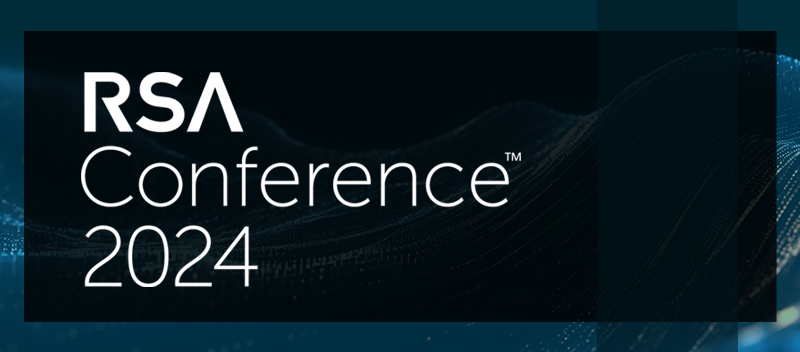Blog TrustNet’s Key Takeaways from RSA Conference 2024: AI, Quantum Computing, and More
TrustNet’s Key Takeaways from RSA Conference 2024: AI, Quantum Computing, and More

The RSA Conference 2024 has been a platform for cybersecurity brainstorming and discussions. Hosted at the Moscone Center in San Francisco from May 6 to 9, this year’s event featured a mixture of on-site and virtually delivered sessions, making it accessible to a global audience.
Both the on-site and virtual sessions were attended by several members from the TrustNet team, who acquired a great deal of knowledge about the latest trends, news, and technological advancement in the industry. Together with other industry and corporate heads, our team went home with essential information that would help improve our cybersecurity and compliance services.
The Dominance of AI at RSA Conference 2024
Each RSA Conference introduces its own set of buzzwords. In recent years, terms like Advanced Persistent Threats, DevSecOps, Cloud Security, Threat Hunting, Machine Learning, Threat Intelligence, and Zero Trust have taken center stage. This year, AI was the standout topic, prominently featured in nearly every vendor’s marketing material.
While many of these AI capabilities are still “in development” or rely on ChatGPT for basic generative functions, much of the excitement revolved around potential rather than current substance. Notwithstanding the buzz, we are right at a watershed moment of a major AI revolution which solemnly guarantees to have a profound consequence in cybersecurity.
Key Takeaways
1. AI as a Double-Edged Sword
AI is like a double-edged sword in that it gives new and effective tools to offenders and defenders, equally. On one hand, adversaries can use AI to swiftly analyze extensive data sets to pinpoint and exploit vulnerabilities in cybersecurity systems. Conversely, advanced anomaly detection and pattern recognition algorithms enable AI to improve defense mechanisms by detecting and neutralizing threats autonomously.
The critical question is: Who will harness these capabilities more effectively—the hackers or the defenders?
2. Zero Trust and Resilience: A Powerful Combination
The Zero Trust security strategy requires that all users and devices connecting to a network be continuously authenticated and authorized, irrespective of where they are located. Based on the principle of “never trust, always verify,” it aims to reduce the impact of breaches by assuming threats can exist both inside and outside the network perimeter.
Cybersecurity resilience, on the other hand, is an organization’s capacity to anticipate, endure, and recover from cyber threats or incidents, ensuring operational continuity and minimizing business disruptions.
3. The Imperative of Data Security in the Age of AI and LLMs
In the age of AI and large language models, data security is imperative. Businesses have a lot to lose if critical information is not protected from unauthorized access or tampering.
If companies fail to act, data processed by LLMs might not always be confidential, integral, or accessible. Neglecting these issues could lead to significant vulnerabilities and potential breaches, compromising sensitive information and operational stability.
4. Cloud Attacks: Modern-Day Bank Heists
An old story from the Wild West tells of a sheriff asking a robber why he targets banks, to which the robber replies, “Because that’s where the money is.” The same logic applies to the cloud; as more organizations migrate their systems to the cloud, both the frequency and sophistication of attacks increase.
During the conference, several speakers talked about how cloud environments are approached. In on-premises infrastructure, security challenges are a significant issue in cloud systems. These include credential theft and phishing, misconfigurations like open storage buckets, unsecured APIs, and weak access controls, among others, and server-side vulnerabilities that stem from hackers taking advantage of system vulnerabilities that have not been patched or through insecure code.
5. The Quantum Computing Challenge in Cybersecurity
Quantum computing holds the potential to revolutionize cybersecurity with its exponentially faster computation speeds, enabling rapid decryption of current encryption methods. This capability could significantly enhance threat detection and response. However, it also poses a risk by potentially breaking conventional cryptographic algorithms.
To address this, quantum-resistant encryption techniques are being developed. NIST has identified several lattice-based encryption prototypes as strong candidates, relying on complex problems like the Shortest Vector Problem (SVP) and the Learning with Errors (LWE) problem, which remain challenging even for quantum computers.
Staying Ahead of the Curve with TrustNet
Maintaining trust and dedication to excellence requires TrustNet’s active participation in major events held in various industries, such as the RSA, to stay up to date with current developments.
Taking the event’s key takeaways by heart, such as AI’s dual role in defense and attack, the synergy between Zero Trust and resilience, the paramount importance of data security in the age of AI and LLMs, the increasing sophistication of cloud attacks, and the pending quantum computing challenges in cybersecurity, will all lead to key improvements to TrustNet’s cybersecurity services in 2024 and beyond.
Ready to elevate your cybersecurity strategy? Talk to an Expert today.




